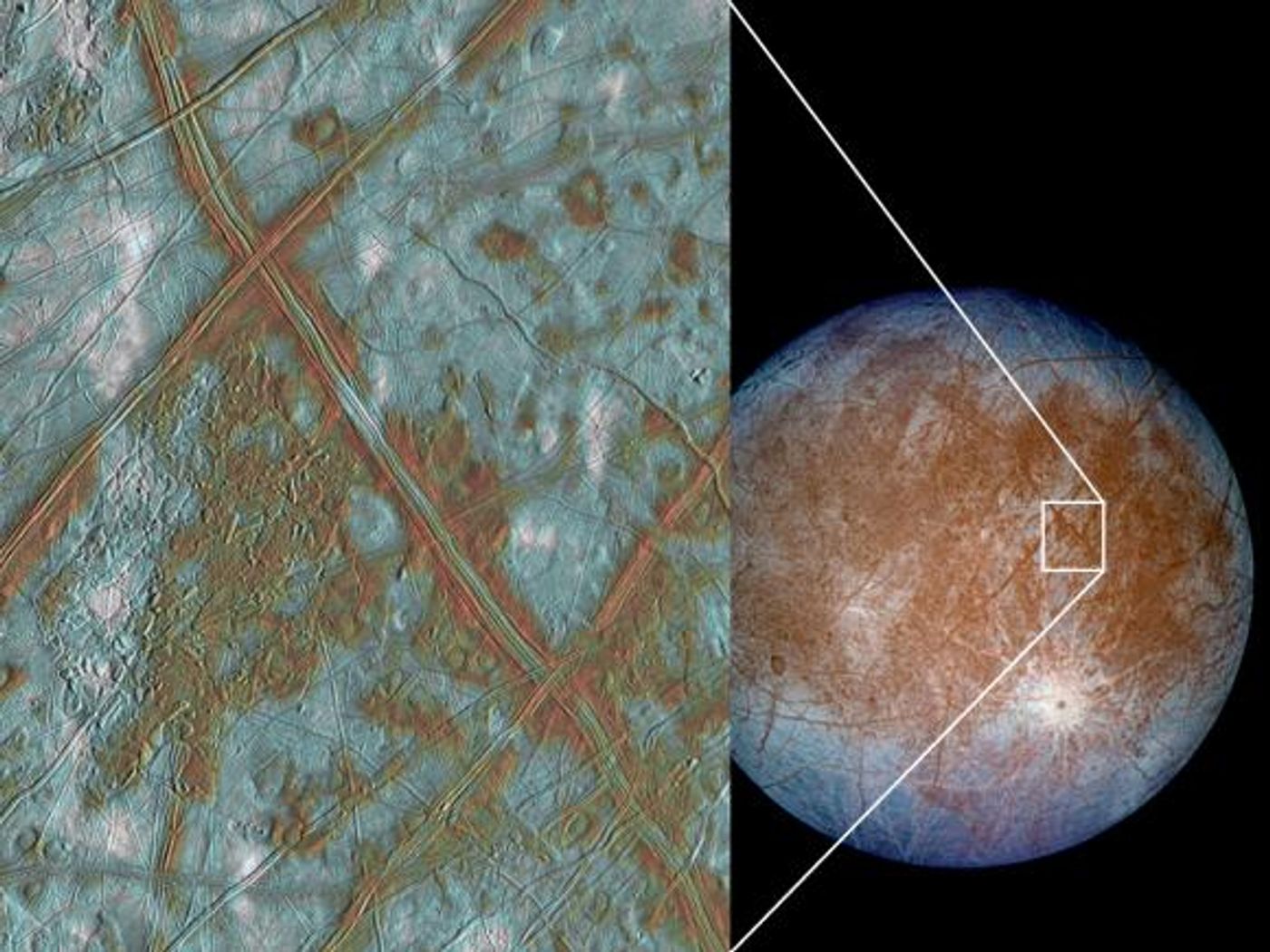Is Europa Hotter Than Astronomers Originally Thought?
Is Jupiter’s smallest moon, Europa, hotter than astronomers originally predicted?

Although the moon is far from the Sun, it does have unique qualities to it that researchers from Brown and Columbia Universities believe could be the work of underlying heat sources.
For one, it’s believed that the moon has a solid ice surface, and underneath the surface is a vast ocean. This means that as it orbits its host planet, gravitational forces cause the icy surface to move around as it floats over the underlying water.
Because it’s such a massive object, it’s generating friction as the ice moves across the surface of the ocean and rubs up against other tectonic pieces of the moon’s surface, which is believed to be one of the main heat sources that could have generated such a vast under-surface ocean in a process known as tidal dissipation.
Columbia University’s Christine McCarthy, the co-author of the study, explains tidal dissipation as similar to the thermal effects you’d feel from repeatedly bending a metal coat hanger:
“If you bend it back and forth, you can feel it making heat at the junction,” she said. “The way it does that is that internal defects within that metal are rubbing past each other, and it’s a similar process to how energy would be dissipated in ice.”
The theory and findings of this research are published in the Earth and Planetary Science Letters and detail that there must be more thermal forces at work than only the Sun to produce the heat necessary to melt ice at that distance from our star.
As as the surface moves, the heat continually melts the inner layers of the ice, as new layers are formed from the colder exterior. Using these two variables, researchers are trying to estimate just how thick the ice layer might be on Europa.
This research could help us to better understand spatial bodies that are further away from the Sun, as their existence is a big mystery because of how far away they are and how difficult it is to see them up close.
Source: Brown University








